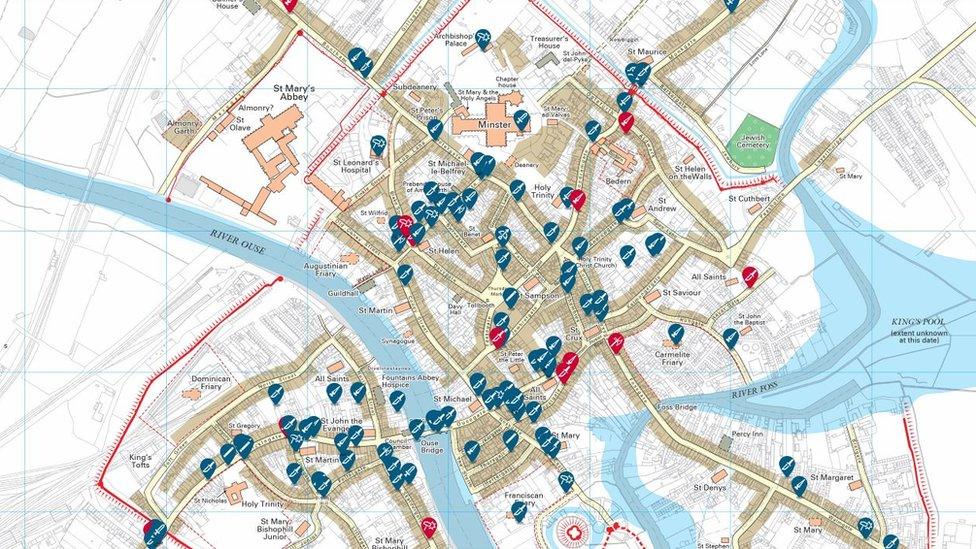Feuds among traders fuelled medieval York murders
- Published

The murder map details homicides in York between 1345 and 1385
Feuds between rival craftsmen helped fuel medieval York's murder rate, new research has found.
The Medieval Murder Maps website, assembled by Cambridge's Institute of Criminology, plots crimes based on 700-year-old coroners' inquests.
Historic homicides in York detailed on the map include a hatter fatally stabbing a competitor and a violent fight between a tailor and a draper.
Prof Manuel Eisner said: "Life in medieval urban centres could be rough".
The map features 130 homicide cases between the years 1345 and 1385, at a time when York was the second most populated and the second richest city in England, after London, researchers said.
Prof Eisner said: "Weapons were never far away, and male honour had to be protected.
"Circumstances that frequently led to violence will be familiar to us today, such as young men with group affiliations pursuing sex and alcohol during periods of leisure on the weekends."
Historic coroner reports reveal a double murder took place at York Minster in 1370
A mason was stabbed with a dagger by another mason on Christmas Day, 1349, in Petergate, according to one of the inquests studied by researchers.
Murderer William Gerard ran off, but his possessions were seized, according to the coroner's report.
In another incident, a schoolmaster from Thirsk killed a shoemaker by "taking a baslard (a dagger or short sword) to his chest" on Bootham on 2 June 1376.
The research also revealed that two men were slain at York Minster on 21 March 1370, with one murderer fleeing the scene while another was arrested.
The map covers homicides during the York's 14th Century "golden age" when, according to academics, the city flourished because of increasing trade as Black Death subsided.
Follow BBC Yorkshire on Facebook, external, X (formerly Twitter), external and Instagram, external. Send your story ideas to yorkslincs.news@bbc.co.uk, external.
Related topics
- Published28 September 2023
- Published9 February 2023
- Published15 May 2019